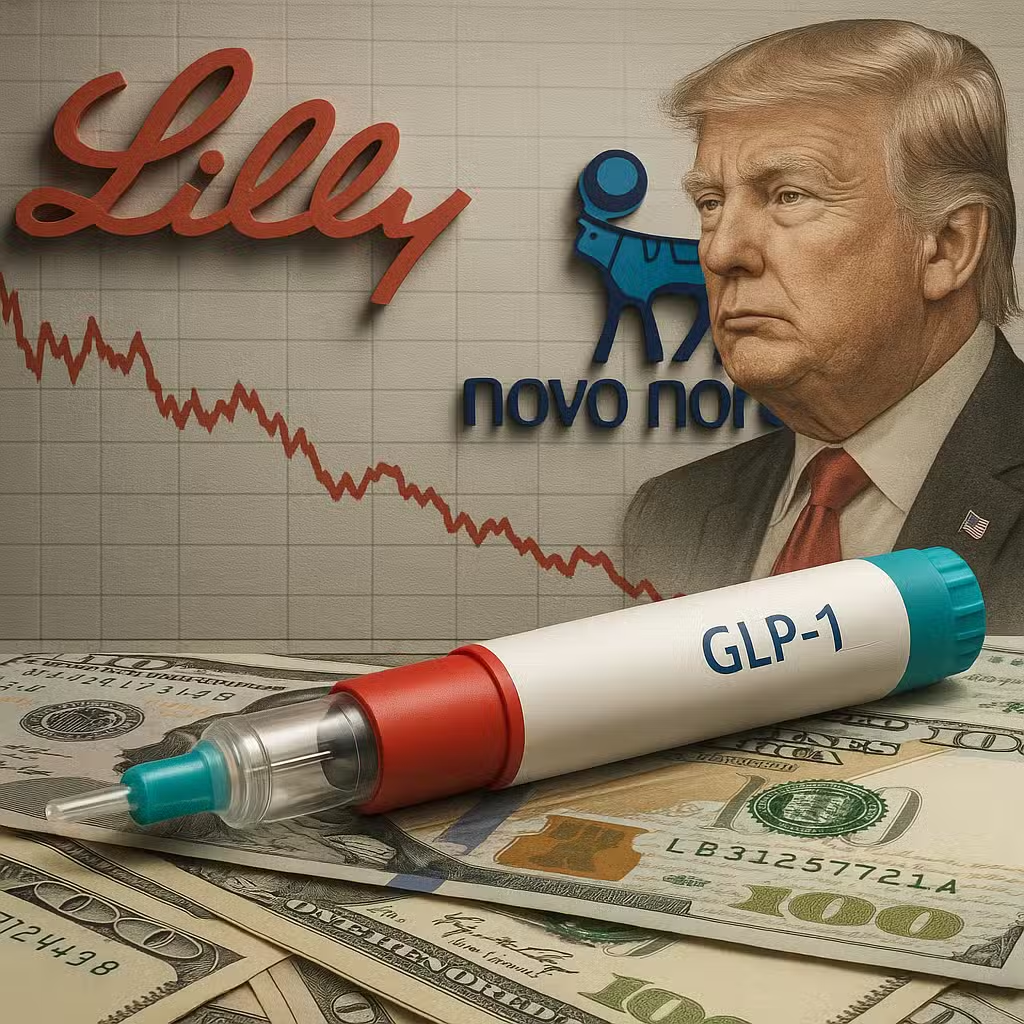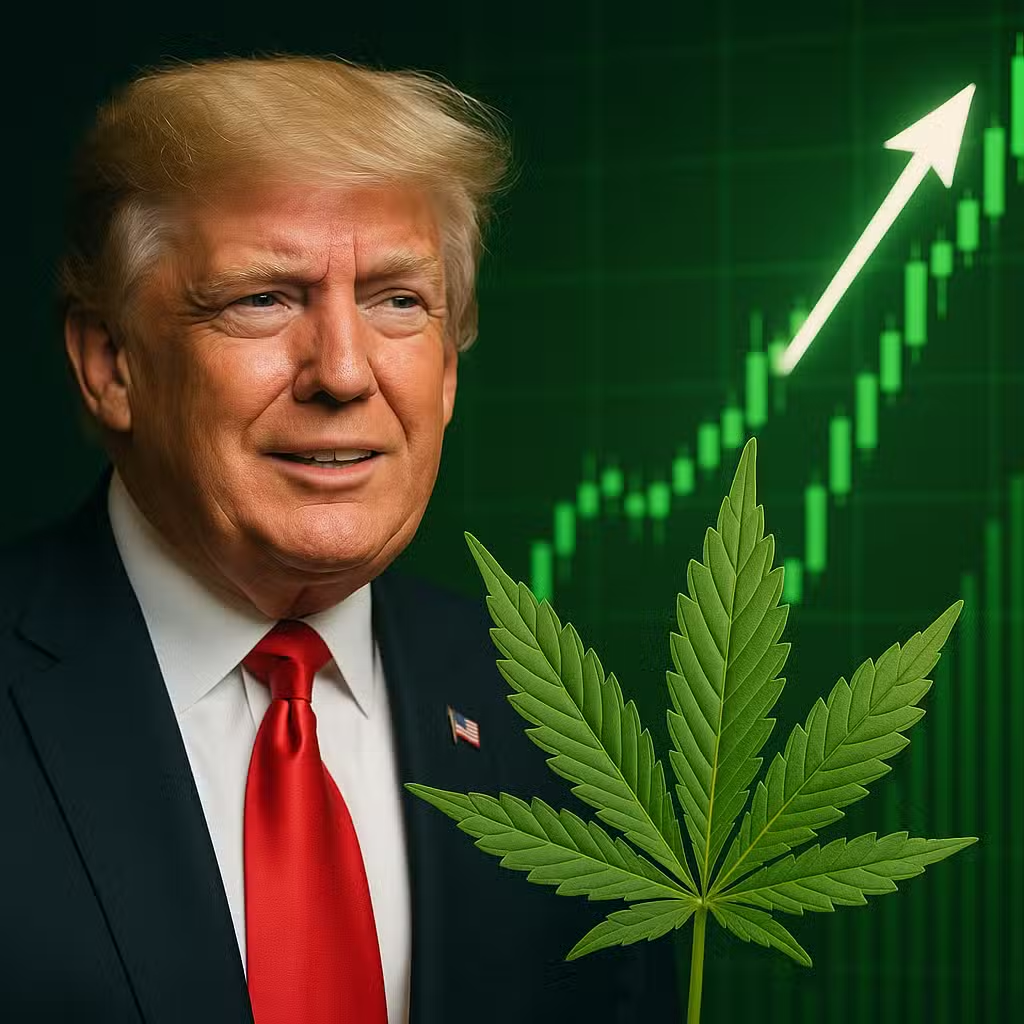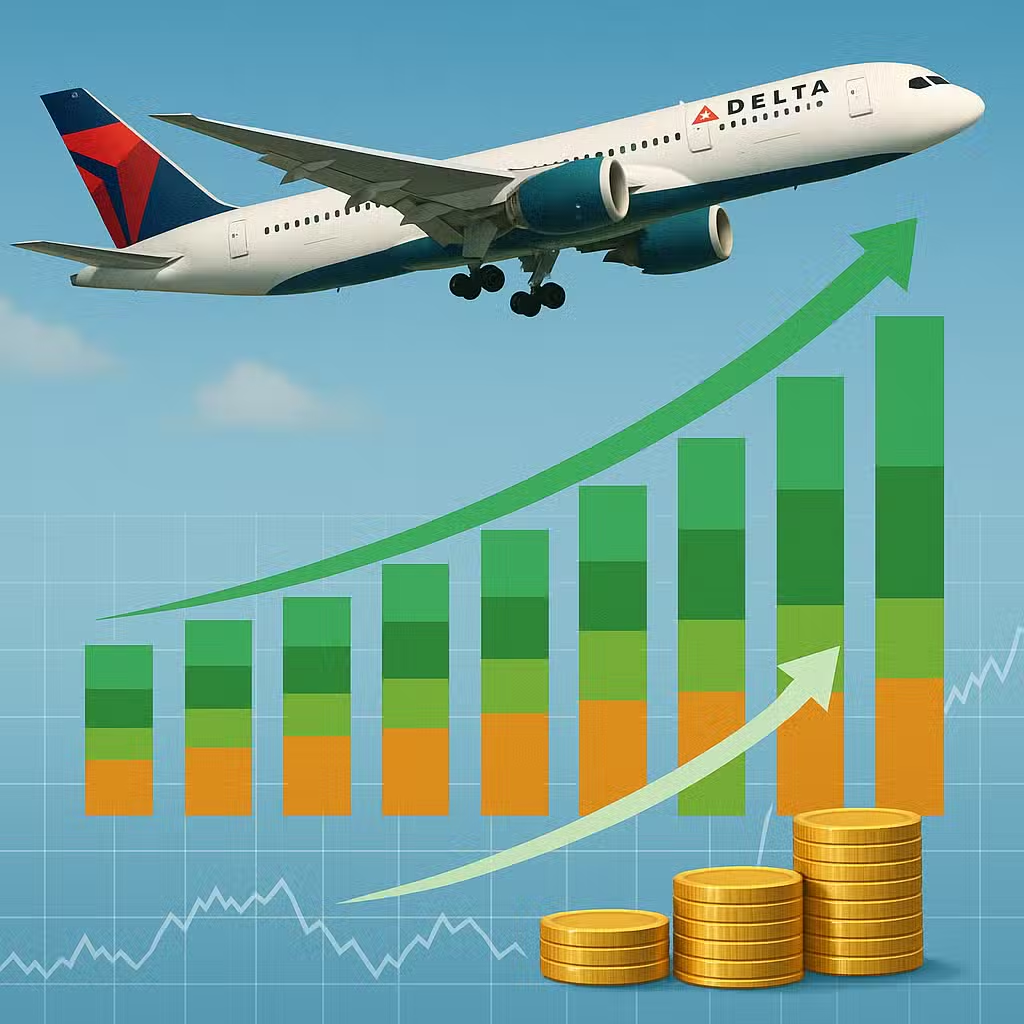Eli Lilly, Novo Nordisk Shares Dip as Trump Comments Spark Concerns Over GLP-1 Pricing
Imagine if your favorite snack cost $1 at one store but $10 at another just down the street. That’s kind of what’s happening with some weight loss medicines in the U.S. right now, and it’s a big deal for people who invest in drug companies.
What’s Happening?
President Trump said he wants to lower the price of popular weight loss drugs, like Ozempic, to $150 per month in the U.S. That’s much less than what people pay right now—sometimes as high as $1,300 a month. In places like London, the same drug can cost under $130.
After this announcement, shares of big drug companies Eli Lilly and Novo Nordisk dropped. Another company, Hims & Hers Health, which sells cheaper versions of these drugs, fell even more.
The government hasn’t made any official deals yet, but they’re pushing drug makers to lower prices so Americans pay about the same as people in other wealthy countries.
Why Investors Should Care
If you own stock in companies that make or sell these drugs, this news could affect your portfolio. Lower prices might mean less profit for drug makers, but more people could afford the medicine, which could mean more sales.
Here’s why this matters for investors:
- Drug Makers: Lower prices could hurt profits in the short term.
- Healthcare Companies: Cheaper drugs might attract more customers.
- Market Shifts: Sudden price changes can make stock prices jump or fall quickly.
Bull Case: The Good Side
- More People Can Buy: Lower prices could open the door for millions of new customers who couldn’t afford the drugs before.
- Insurance Savings: Employers and health plans might spend less, making it easier to cover more people.
- Bigger Market: If the drugs are more affordable, the total market for weight loss medicines could grow. In fact, analysts at Morgan Stanley project the global market for these drugs could reach $100 billion by 2030.
Bear Case: The Risks
- Lower Profits: Drug companies might make less money per sale, which could hurt their stock prices.
- Uncertainty: No real deals have been made yet, so there’s a risk plans could change or fall apart.
- Competition: Cheaper “compounded” versions of these drugs are already being sold by telehealth companies, which adds more pressure.
What the Numbers Say
Only about 1 in 5 big employers offer these weight loss drugs to workers, according to a recent Kaiser Family Foundation survey. Of those, two-thirds say the cost is making a huge impact on their budgets. That shows just how much these prices matter, not just for families but also for companies and investors.
Right now, most people without insurance have to pay about $500 a month if they buy directly from the drug makers, or $130–$200 from telehealth companies. If the price really drops to $150, it could totally change who buys these drugs and from where.
Investor Takeaway
- Watch for Policy Updates: Keep an eye on government announcements about drug pricing—any deal could move stock prices fast.
- Diversify: If you own drug stocks, consider spreading your investments across different sectors to manage risk.
- Look at the Whole Market: Cheaper drugs might hurt some companies but help others (like those selling telehealth or insurance).
- Think Long Term: Even if prices drop, more people using these medicines could mean bigger profits over time.
- Stay Informed: Follow studies and surveys to see how real people and employers are reacting to new prices.
For the full original report, see CNBC







